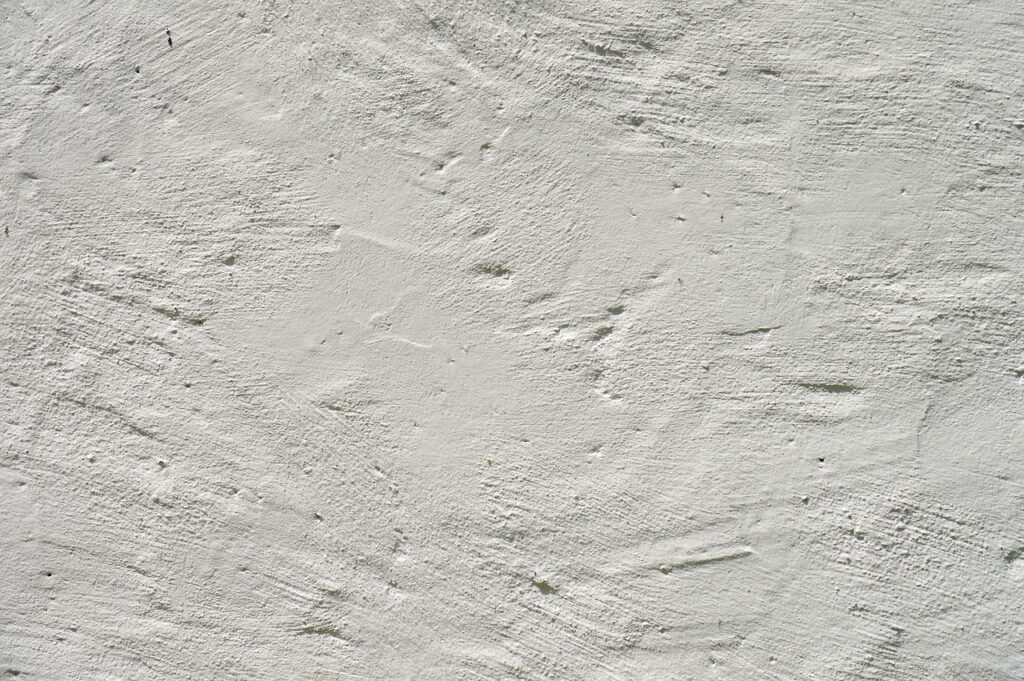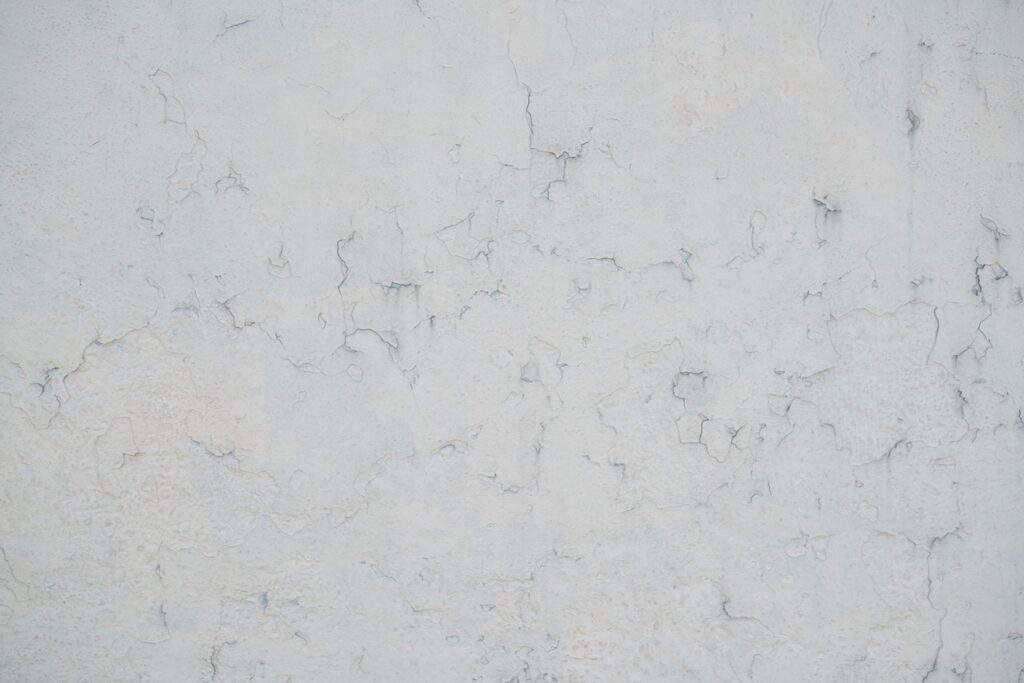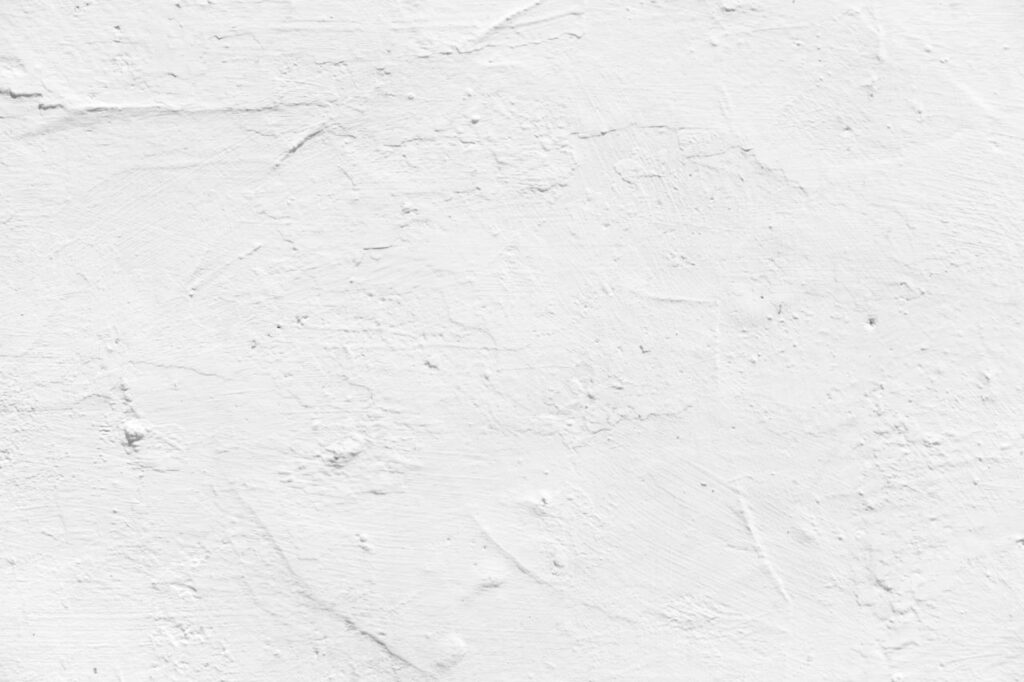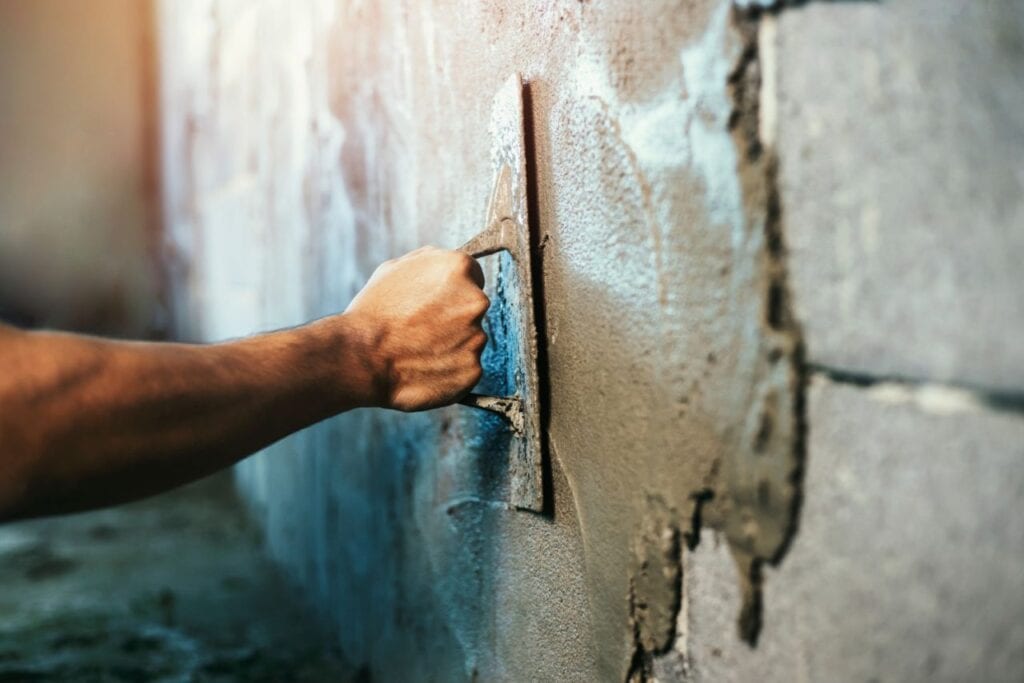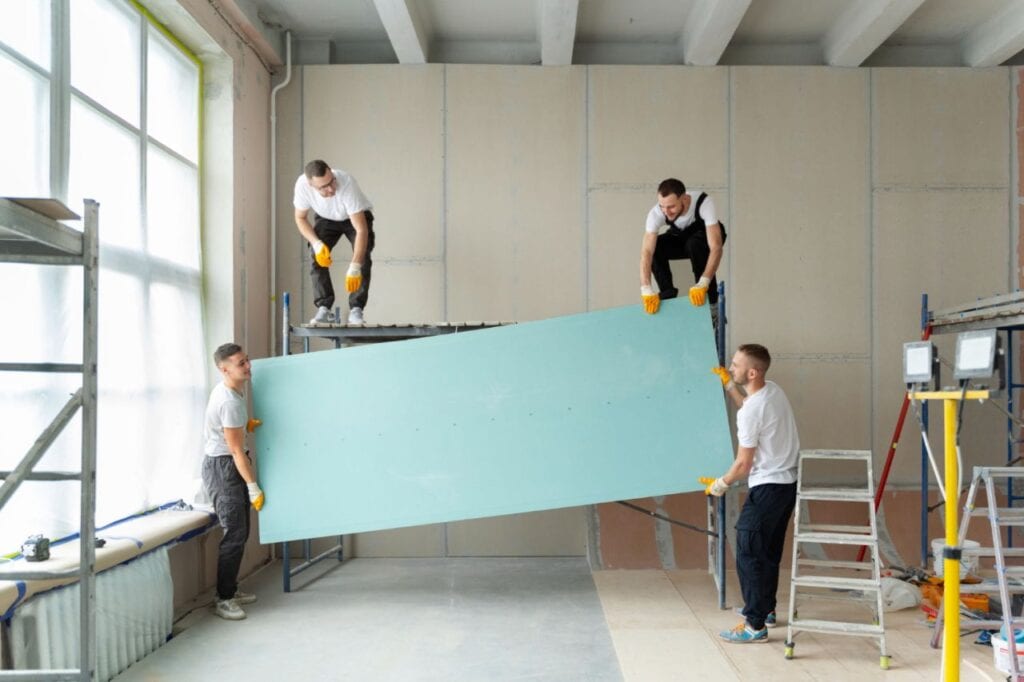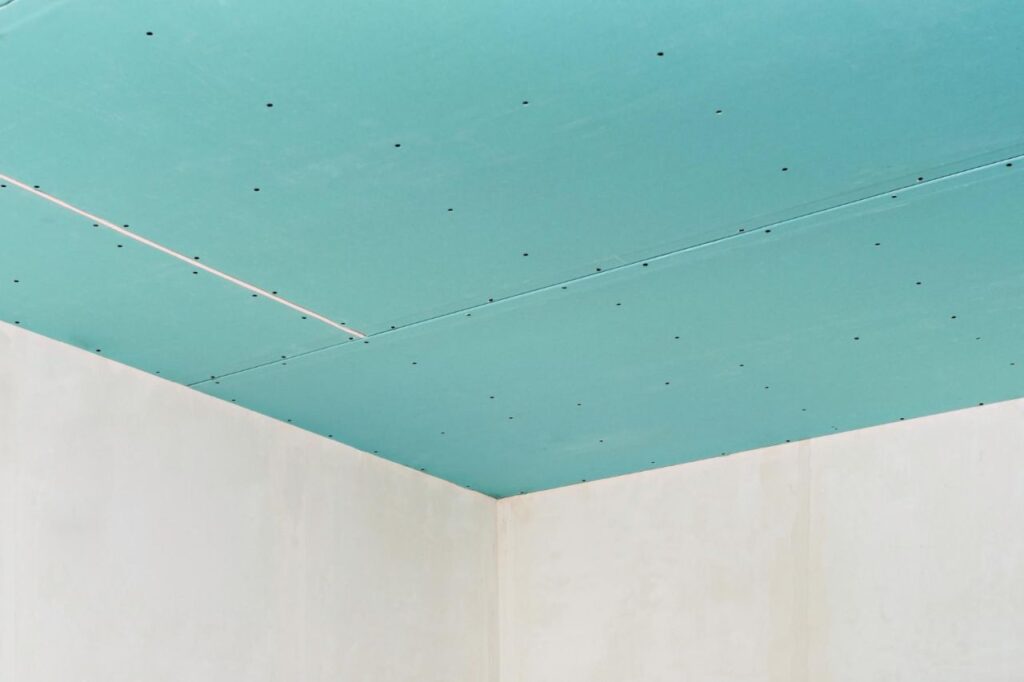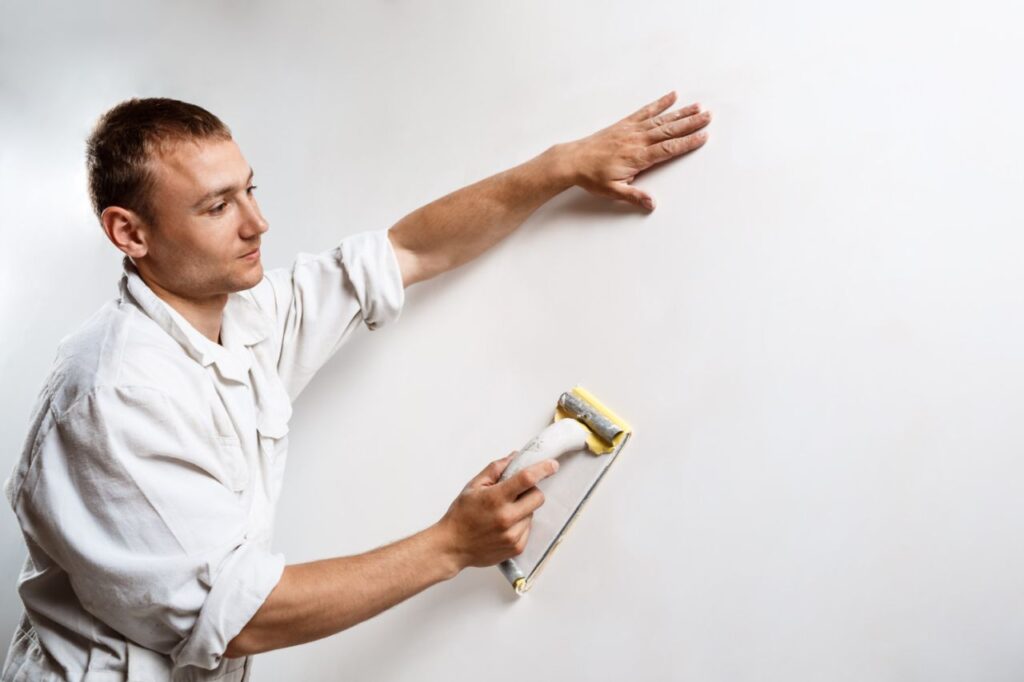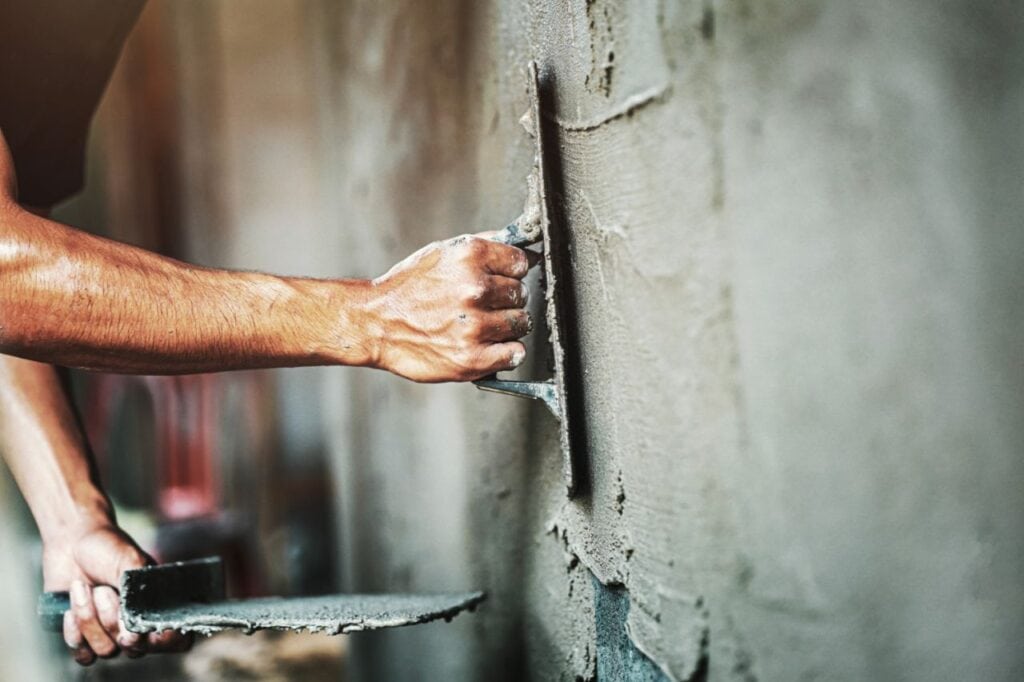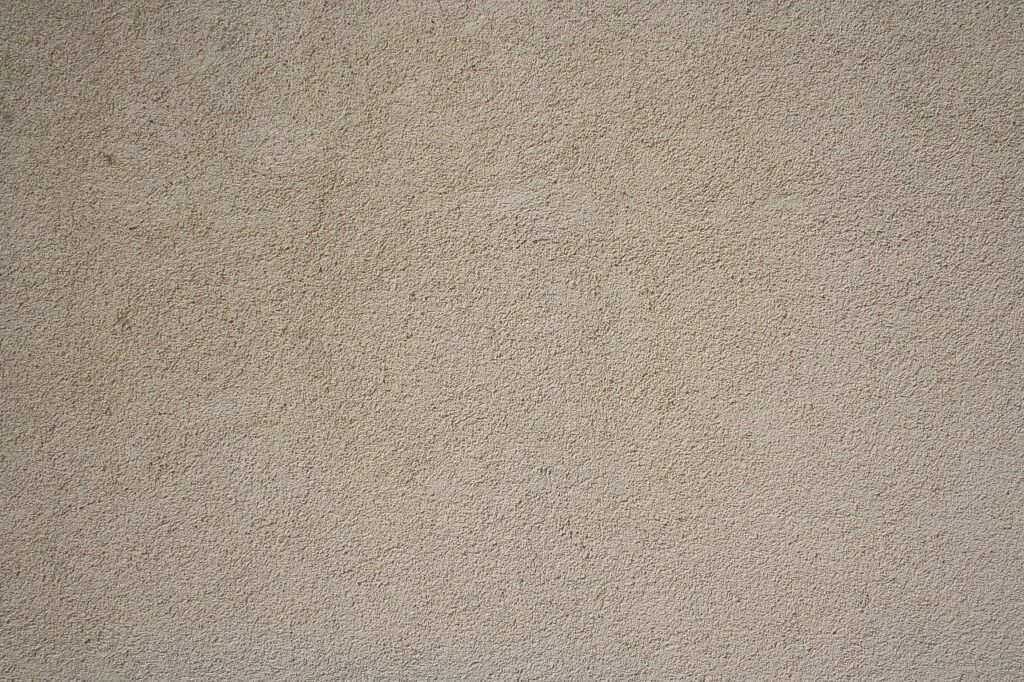If you want your walls and ceilings to be as strong and comfortable as possible, use the right plaster. Cement and gypsum plaster are the most widely used and widely recognised types of plaster on the market today.
Deciding between these two plasters may initially seem daunting, with the varying requirements of various dwellings. However, if you're familiar with the distinctions between cement and plaster, choosing the right one for your project will be a breeze.
Cement plaster's durability and moisture resistance make it a popular choice for use on exterior walls. It can be used on interior walls if necessary, but it takes longer to set and cure, is easily stained by moisture, and has a rough texture that doesn't lend itself to puns. In contrast, gypsum plaster is used exclusively on interior walls because of its fast setting time, smooth texture, and low thermal conductivity.
Home improvement projects benefit from having an understanding of how cement and plaster are used, as well as their respective properties. For example, because walls and ceilings need to withstand wear and tear over time, the wrong plaster can compromise the integrity of your home's structure.
When it comes to selecting the best plastering material, considering pest control measures is essential. Two popular options to consider are gypsum and cement. Gypsum plaster, also known as plaster of Paris, offers its own set of advantages for pest prevention.
It provides a smooth and seamless finish that leaves no room for pests to hide or access your walls. Its excellent workability allows for precise application, creating a tight and impenetrable surface. Additionally, gypsum plaster has natural properties that discourage pests, such as its alkaline nature that acts as a deterrent to insects. By choosing gypsum plaster, you not only achieve a visually appealing finish but also reinforce your walls against potential pest infestations.
When planning a construction project, giving your walls the plastering they need is a top priority; Check out this blog post for advice on when and how to do it.
What Is Gypsum Plaster?
Plaster of gypsum is a white cementing material made by dehydrating gypsum to various degrees, often with special retarders or hardeners.
A plastic mixture of gypsum and water is applied to the surface, where it then chemically recombines to harden. Finally, it can be slathered over rough concrete or brick to create a sleek finish.
All gypsum plasters have gypsum rock (hydrous calcium sulphate) as their primary ingredient because it is the only sulphate mineral that can dissolve in water. Around three-quarters of the chemically combined water in the gypsum rock is removed during processing by a controlled heating process called calcination.
To restore the material to its original chemical composition, add water at the time of application, and watch it harden and set.
Benefits Of Gypsum Plaster
Although cement plaster has many applications in building, gypsum should still be considered for any decorative plastering projects inside your home.
Excellent Fire Resistance
Gypsum plaster's exceptional fire resistance is a major benefit. Gypsum is naturally fireproof because it contains water molecules within its structure. Water in gypsum slowly releases as steam when heated, slowing the spread of fire and buying precious time for evacuation and firefighting.
Sound Insulation Properties
Gypsum plaster has the ability to absorb sound, making it a great material to use in noisy environments. In addition, it lessens the amount of noise that can be heard from room to room, making for a more relaxing and pleasant aural experience overall.
Environmentally Friendly
Gypsum plaster is widely regarded as a green building material. This occurs naturally, and the mining process leaves a minimal environmental footprint. In addition, plaster made from gypsum can be reused and recycled, which helps the environment and encourages green building.
Smooth And Uniform Finish

Gypsum plaster is widely used because of its reputation for producing a uniform and smooth surface on walls and ceilings. In addition, because of its smooth, fine texture, it is simple to apply and highly malleable. Because of this, gypsum plaster is great for making elaborate designs and decorative touches that will last a long time and look great.
No Shrinking, No Mould
Gypsum plaster is less likely to shrink because of its adaptability. While it may not fare well against the elements, its durability makes up for its lack of weatherproofing.
Plaster also inhibits the growth of mould and mildew. Therefore, gypsum is a perfect match for interior wall and ceiling coverings because it resists mould, a problem that most people would rather not deal with.
Sets Quickly
Gypsum plaster, in contrast to cement, hardens and smoothes in a matter of hours rather than days. Therefore, you can start painting after only 72 hours if no additional steps need to be added. Keeping your wall-plastering plan as straightforward as possible is essential when working with gypsum, as this will save you a tonne of time and energy.
Thermal Conductivity Is Low
Many people prioritise maintaining a comfortable temperature at home, and gypsum is an excellent material for this purpose.
Gypsum plaster is not a good heat conductor, so it won't let any warm air out or move through it quickly. This means that the plaster will do a good job of keeping the heat in during the winter and out during the summer. Another great safety feature is its high fire resistance, providing a shield for the walls or ceiling it is installed.
Drawbacks Of Gypsum Plaster
It's important to remember the drawbacks of Gypsum plaster before deciding to use it exclusively.
Limited Resistance To Moisture
Gypsum plaster's low moisture resistance is one of its major drawbacks. As a result, it cannot be used in damp environments or outdoors. Cracking, warping, and loss of adhesion are all signs of gypsum plaster deterioration due to moisture.
Interior Only
Gypsum plaster's biggest drawback is that it can't be used on exterior walls. In addition, compared to cement plaster, it provides very little protection from the elements. Because of this, gypsum is limited in its usefulness compared to cement.
The fact that gypsum can only be used in a limited number of situations makes its many advantages over cement largely irrelevant.
Limited Durability And Strength
Gypsum plaster is strong enough for most interior uses, but it needs to stand up better to wear and tear than other plastering options. As a result, additional strengthening or protection measures may be required in high-traffic areas or regions prone to frequent impacts.
Fragility
When compared to other types of plaster, gypsum plaster is quite delicate. It is more likely to chip or crack in the event of an impact. Plaster can develop structural weaknesses if not handled and installed with care.
Moisture-Related Effects
Gypsum plaster is best used indoors but should never be used in areas where water or moisture could pool. For example, there is no use of the bathroom, shower, balcony, basement, or kitchen. These locations are either directly exposed to the climate and humidity or have access to running water. Plastering with gypsum will crack under the pressure.
What Is Cement Plaster?
Plaster made from cement is commonly used in construction and has several different names. Walls, ceilings, and other surfaces can be given a smooth and long-lasting finish by applying a mixture of cement, sand, and water. Because of its durability, adaptability, and resistance to the elements, cement plaster is frequently used indoors and outdoors.
Cement plaster is made by combining Portland cement, which serves as the binder, with sand, which adds both bulk and texture. Water is added to the blend to achieve the right application consistency. The cement-to-sand ratio is flexible, depending on the desired consistency and sheen.
Layers of cement plaster are typically applied in this order: scratch coat, brown coat, and finish coat. The scratch coat creates a rough surface for improved adhesion; the brown coat adds thickness and strength; and the final coat creates the intended silky smooth, and aesthetically pleasing appearance.
Benefits Of Cement Plaster
Many home improvement projects would benefit from using cement plaster.
Moisture Resistant
Cement plaster also has the advantage of being resistant to different humidity levels. As a result, homes in a wide variety of climates and locations may benefit from this, as erosion and sudden water damage are no longer concerns. While water presents numerous challenges for gypsum plaster, it has little effect on cement plaster.
Strength And Durability
The strength and longevity of cement plaster are well-documented. It adheres strongly to the surface, making it resistant to cracks, bumps, and other forms of wear and tear. The durability of cement plaster makes it an excellent choice for use in either indoor or outdoor settings.
Protection From The Elements
Cement is a carefully proportioned blend of three basic ingredients: sand, water, and cement. As a result of these factors, it is reasonably resilient to things like precipitation, high winds, and air pollution. Of course, it won't make your exterior walls impregnable, but it will give you a good head start by providing a sturdy base and some initial defences.
Useful Both Inside And Outside
Cement plaster provides extra protection for vulnerable exterior and interior walls. It can be used anywhere to add substantial durability to a wall or other area. Although its versatility means it won't be used for every home improvement, the fact that it can be installed on either the interior or exterior of a building gives it a leg up on the competition.
Cost-Effective Solution
When compared to other plastering materials, cement plaster is typically less expensive. It strikes a fine balance between effectiveness and cost, making it a sensible option for constrained-budget building projects. Cement plaster is inexpensive because it is widely available and simple to use.
Drawbacks Of Cement Plaster
Although cement has many uses and is durable, some drawbacks exist.
Time-Consuming
Cement plaster takes much time and effort to perfect, requiring patience. In addition, water curing is necessary before and after the cement is applied and set to the wall to prevent cracks.
It may take more than a week to complete the post-curing process correctly. On-site mixing also requires additional manpower, resources, and time. This, in addition to the time spent punning for smoothness, could significantly extend the project's duration beyond reasonable.
Deficiency In Fire
Cement is resistant to water and wind, but it can't take the heat. Cement plaster breaks down and becomes brittle and fragile when exposed to fire. As a result, it can no longer serve as a shield for the bulwark beneath it. Your wall's concrete and steel framework will be severely compromised. Fire prevention measures should be taken into account right from the start of the design process for your walls.
Rough Texture
Plaster made from cement is typically a rough dark grey in colour and texture. A softer surface, necessary for painting or smoothing, can be achieved by treating the walls with POP punning. Unfortunately, you'll have to pay more for this, and there's no way to cover it up with paint (no pun intended).
The dull colour can be off-putting even if the poor texture is tolerable. If you want to avoid the punning process, this is especially true if you use it inside, where it can restrict your choice of paint colours.
Mould And Shrinkage
Another potential eyesore is the appearance of hairline cracks in the walls due to the natural tendency of cement to shrink over time. If not treated, it can also become infested with mould or mildew. Plastering with cement must be carefully installed and maintained. While its durability cannot be denied, cement requires extra effort to achieve a polished appearance in a home.
Factors To Consider In Choosing The Best Plastering Material
Plastering materials can make or break a building, so weighing many factors before settling on one is important. Here are some of the most important considerations to make when selecting a plastering material:
1. Application Requirements
Think about the needs of your project in particular. Think about the surface you'll be plastering, the desired finish, and whether or not the material is meant for indoor or outdoor use. The properties of various plastering materials make some of them better suited than others for a given task.
2. Weather Resistance
Plaster must be waterproof to be used in the great outdoors. The elements, including the rain, sun, and wind, must not cause it to degrade or lose its protective qualities. Use weatherproof supplies to ensure the longevity of your project.
3. Fire Resistance
Consider the plaster's fire resistance properties in light of the project's needs and the local building codes. Gypsum plaster, for example, has inherent fire resistance and can be used as a fireproofing material. This is especially crucial for interior uses where fire prevention is a top concern.
4. Ease Of Application
Think about how simple it is to use the plastering material. Consider how easily you'll work with the material, what kinds of application techniques you'll need, and how much experience you'll need. It may be necessary to use special equipment or methods to apply some materials, while others can be used with minimal effort.
5. Aesthetic Appeal
Think about how you'd like the surface to look once you're done. The textures, finishes, and decorative options available when using plaster are highly variable. Verify that you can get the desired visual effect from the material, whether it's a uniform and smooth finish, ornamental designs, or textured surfaces.
Conclusion
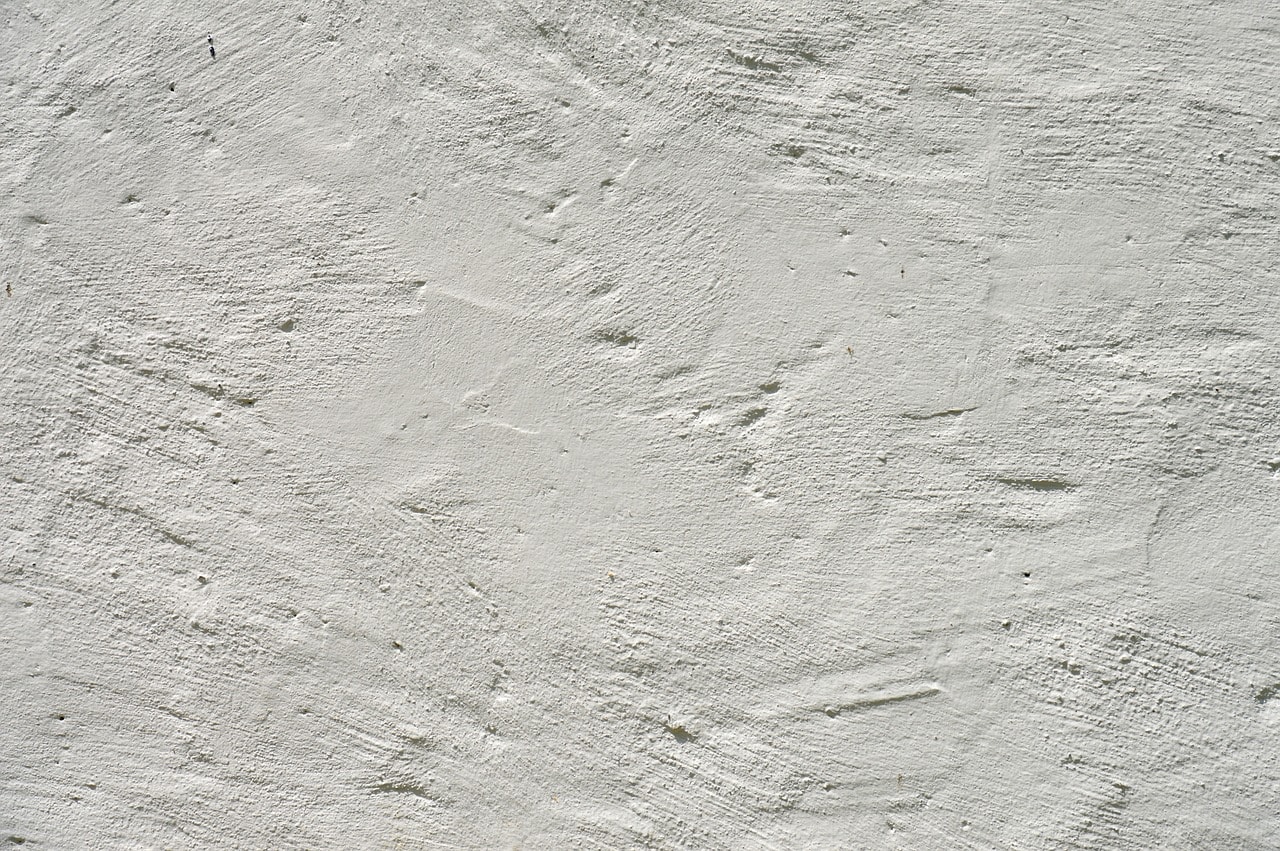
White gypsum plaster is a cementing substance produced by dehydrating gypsum to varying degrees, sometimes with added hardeners or retarders. Because of its strength and resilience to moisture, it is often used for external walls, despite its slow curing time and susceptibility to staining from rain and snow. When it comes to interior walls, gypsum plaster is the material of choice due to its quick curing time, silky smooth texture, and low heat conductivity.
Gypsum plaster's many advantages include its low heat conductivity, rapid set time, lack of shrinkage and mould growth, strong fire resistance, and great sound insulation capabilities. It doesn't change shape or become mouldy, making it great for use on interior walls and ceilings. Low moisture resistance, indoor use exclusively, reduced durability and strength, fragility, and the impacts of moisture all work against it.
In contrast, cement plaster is frequently used on walls, ceilings, and other surfaces because of its resilience, versatility, and weatherproofing. You can make your own by mixing Portland cement and sand together, then adjusting the consistency with water. You can adjust the cement-to-sand ratio to achieve the right consistency and gloss for your project.
Plastering walls and ceilings with gypsum or cement each has its benefits and cons. The key to a successful home remodelling job is knowing how these various materials differ. Cement plaster is an economical and flexible plastering material with many applications in house renovation. It can withstand both indoor and outdoor conditions thanks to its resistance to moisture, strength, and durability. It's the right proportions of sand, water, and cement, and it keeps out the rain, the wind, and the smog. Exterior and interior walls are both reinforced with cement plaster for added durability.
Cement plaster has a few downsides, including a lengthy curing and drying time (often more than a week). It is not fireproof, thus it easily cracks and breaks when heated. Cement plaster's rough texture is off-putting, especially when applied inside, and it can lead to tiny cracks.
Application needs, weather resistance, fire resistance, ease of application, and aesthetic appeal are all factors to think about while deciding on the ideal plastering material. To achieve the desired aesthetic result, it is important to think about the surface's finish, textures, finishes, and ornamental possibilities. When making your plastering material selection, keep these things in mind.
Content Summary
- Cement and gypsum plaster are widely recognised types of plaster used for walls and ceilings.
- Understanding the differences between cement and gypsum plaster helps in choosing the right one for a project.
- Cement plaster is durable and moisture resistant, suitable for exterior walls.
- Gypsum plaster is used exclusively for interior walls due to its fast setting time and smooth texture.
- The wrong plaster can compromise the integrity of a home's structure.
- Gypsum plaster is made by dehydrating gypsum and has fire-resistance properties.
- Gypsum plaster absorbs sound, making it ideal for noisy environments.
- Gypsum plaster is environmentally friendly and can be reused and recycled.
- Gypsum plaster provides a smooth and uniform finish on walls and ceilings.
- Gypsum plaster inhibits the growth of mould and mildew.
- Gypsum plaster sets quickly, allowing for faster painting and finishing.
- Gypsum plaster has low thermal conductivity, helping maintain a comfortable temperature indoors.
- Gypsum plaster has limited resistance to moisture and should not be used in damp environments or outdoors.
- Gypsum plaster is suitable only for interior use.
- Gypsum plaster requires additional measures for durability and strength in high-traffic areas.
- Gypsum plaster is more fragile and prone to chipping or cracking upon impact.
- Gypsum plaster should not be used in areas prone to water or moisture pooling.
- Cement plaster is commonly used in construction for its durability and resistance to the elements.
- Cement plaster is resistant to different humidity levels and erosion.
- Cement plaster provides strength and durability, suitable for both indoor and outdoor use.
- Cement plaster protects walls from the elements, such as precipitation and high winds.
- Cement plaster is a cost-effective solution compared to other materials.
- Cement plaster is time-consuming to apply and requires water curing for proper setting.
- Cement plaster lacks fire resistance and may become brittle when exposed to fire.
- Cement plaster has a rough texture and requires additional treatments for a smoother surface.
- Cement plaster may develop hairline cracks over time and require maintenance to prevent mould or mildew.
- Factors to consider when choosing a plastering material include application requirements, weather resistance, and fire resistance.
- Ease of application and aesthetic appeal are important considerations when selecting a plastering material.
- Plaster materials have different properties and suitability for specific tasks.
- Weather resistance is crucial for outdoor plastering projects.
- Fire resistance should be considered based on project needs and building codes.
- The ease of application varies among plastering materials.
- Plastering materials offer diverse options for textures, finishes, and decorative effects.
- A proper selection of plastering material is essential for a building's longevity.
- Gypsum plaster's fire resistance helps slow down the spread of fire and allows for evacuation.
- Gypsum plaster's sound absorption properties make it suitable for creating a pleasant environment.
- Gypsum plaster is environmentally friendly due to its natural occurrence and recyclability.
- Gypsum plaster provides a smooth and uniform surface finish on walls and ceilings.
- Cement plaster's durability makes it suitable for interior and exterior applications.
- Cement plaster provides protection against the elements and is resilient to precipitation and air pollution.
- Cement plaster offers versatility for enhancing the durability of walls.
- Cement plaster is a cost-effective option due to its availability and ease of use.
- The time-consuming nature of cement plastering requires patience and proper curing.
- Cement plaster is not fire-resistant and can become brittle when exposed to high temperatures.
- Cement plaster has a rough texture that can be improved with additional treatments.
- Cement plaster may develop cracks and require maintenance to prevent mould or mild.
FAQS About Plastering Material
Crude gypsum is used as a fluxing agent, fertiliser, paper and textiles filler, and Portland cement retarder. In addition, about three-fourths of the total production is calculated as plaster of Paris and as building materials in plaster, cement, board products, and tiles and blocks.
No, gypsum plaster is not suitable for exterior applications. Gypsum plaster has limited water resistance and is more susceptible to damage from moisture and weather conditions. It is primarily designed for interior use, such as walls and ceilings. For exterior applications, it is recommended to use cement-based plaster or other materials specifically designed for outdoor use.
Yes, gypsum plaster does require some special preparation before application. Before applying gypsum plaster, the surface should be clean, free from dust, dirt, and loose particles. In addition, it is important to ensure that the surface is dry and stable. In some cases, a primer may be required to improve adhesion. Any cracks or gaps should also be filled and smoothed out before applying the gypsum plaster. Following these preparation steps helps to ensure a proper bond and a smooth, durable finish.
Several factors can affect the setting time of cement plaster. The main factors include:
- Type of cement: Different types of cement have varying setting times. For example, rapid-setting cement will have a shorter setting time than regular cement.
- Temperature: Higher temperatures accelerate the setting time, while lower temperatures slow it down. Extreme temperatures can lead to issues like quick setting or prolonged drying times.
- Water content: The amount of water used in the mix affects the setting time. Higher water content can extend the setting time, while lower water content can shorten it. It's essential to follow the recommended water-to-cement ratio.
- Admixtures: Admixtures like accelerators or retarders can influence the setting time. Accelerators speed up the setting process, while retarders slow it down. These additives often adjust the setting time based on project requirements.
- Mixing technique: Proper mixing of the plaster is crucial. Over-mixing or under-mixing can affect the setting time and the overall performance of the plaster.
It is important to consider these factors and follow the manufacturer's guidelines to achieve the desired setting time for cement plaster.
Yes, depending on the specific requirements and application areas, gypsum and cement plaster can be used together in a project. Each plastering material has advantages and limitations, and its use can be determined based on the project's needs.


